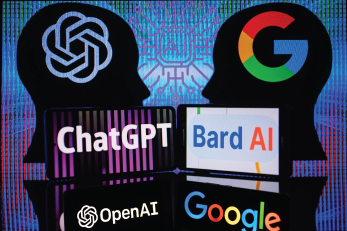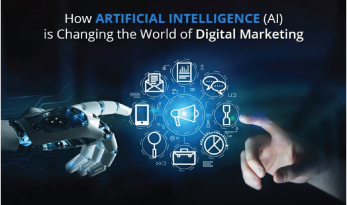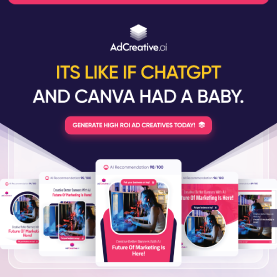How AI is Transforming Digital Marketing
When I first started building my online presence, I was knee-deep in spreadsheets, keyword planners, and endless hours of brainstorming. Don’t get me wrong—manual effort teaches you a lot, but it’s not exactly the fast lane to success. That’s where AI tools come into play, and let me tell you, they’re absolute game-changers for anyone serious about scaling their digital marketing strategy.
Take content creation, for example. Back in the day, I’d spend hours trying to come up with the perfect blog post angle. Then I stumbled across Jasper AI, a tool that doesn’t just help with ideas—it practically writes drafts for you. I remember feeding it a topic about “email marketing tips” and watching it spit out a fully-formed blog structure in minutes. Sure, I still had to tweak it, but it saved me at least 50% of the time I’d usually spend on outlining. That’s time I could reinvest in optimizing my email campaigns.
Speaking of email, ActiveCampaign is another AI-powered tool I swear by. It doesn’t just send emails—it predicts when your audience is most likely to open them, based on past behavior. It’s like having a little digital fortune-teller in your pocket. I ran an A/B test with their predictive sending feature, and my open rates jumped by 15%. That’s a huge win in a world where inboxes are overcrowded with noise.
But AI isn’t just about saving time; it’s also about improving quality. Tools like Canva’s Magic Design have completely redefined how I approach visual content. I’m no graphic designer, but with a few clicks, I can create scroll-stopping Instagram posts or ad creatives that look like they came from a top-tier agency. The first time I used it, a client actually asked which designer I’d hired. (I kept my little secret, of course.)
The biggest lesson I’ve learned? You don’t have to be a tech wizard to use AI effectively. Start small—pick one tool that solves your biggest pain point and master it. Whether it’s automating your social media scheduling with Buffer AI or diving into analytics with Google’s Performance Max, these tools are like having an extra set of hands (and brains) in your business.
Trust me, once you get a taste of what AI can do, you’ll wonder how you ever managed without it.
The Role of AI in Digital Marketing
When I first dipped my toes into digital marketing, I was juggling about 20 tasks at once—building email lists, scheduling social media posts, and figuring out ad targeting. It felt like a never-ending cycle, and honestly, I was running on fumes most of the time. That all changed when I started leveraging AI. If you’re not using AI to lighten your workload, you’re leaving serious growth on the table.
One of the first tools I fell in love with was HubSpot’s AI-powered CRM. Imagine this: instead of manually sifting through leads and trying to figure out who’s worth your time, the system automatically prioritizes the hottest prospects based on engagement data. The time I saved here? Priceless. I shifted those hours toward refining my messaging—and that’s when I started seeing a real spike in conversions.
Then there’s email marketing. Anyone who’s spent hours tweaking subject lines or segmenting lists knows how frustrating it can be. Enter Mailchimp’s AI recommendations. One time, I used their subject line analyzer, which suggested a tweak that boosted open rates by nearly 20%. Something as simple as changing “Discover Our Sale” to “Don’t Miss Out on 20% Off” made all the difference. AI’s knack for understanding what resonates with audiences is like having a secret weapon in your back pocket.
But let’s talk about scale. Personalization used to scare me. How could I possibly create unique experiences for thousands of users? Dynamic ad platforms like Google Ads’ Performance Max changed the game. These tools analyze user behavior and adjust campaigns in real-time to match intent. I once ran a campaign where AI optimized ad placements and creative variations—and it brought in a 35% higher ROI compared to my manual attempts. It was like magic, except it wasn’t. It was just data and automation working together.
The best part? AI isn’t here to replace marketers—it’s here to amplify what we do best. Sure, it automates the grunt work, but that’s what frees you up to focus on strategy, creativity, and connection—the things no algorithm can replicate.
If you’re serious about scaling, start small. Automate one task—maybe your email campaigns or ad targeting. Once you see the impact, you’ll wonder how you ever survived without it. Trust me, AI doesn’t just save time—it makes you smarter, faster, and a whole lot more effective.
Categories of AI Tools for Digital Marketers
When I first started experimenting with AI tools, I remember being completely overwhelmed by the sheer variety of options. Every tool promised to revolutionize my workflow, but let’s be real—not all of them delivered. That’s when I realized the key to staying sane: categorize your needs before you dive into tools. Trust me, this approach will save you countless hours and a fair bit of frustration.
Content Creation and Curation
If you’re like me, content is at the heart of your digital strategy. Tools like Jasper AI and Surfer SEO are lifesavers here. Jasper can whip up a blog post outline in minutes, while Surfer ensures your content is optimized for keywords that matter. One time, I combined the two and created a piece that landed on the first page of Google within weeks. Pro tip: let AI handle the heavy lifting of brainstorming, so you can focus on injecting your unique voice into the content.
Social Media Management
Social media can feel like a black hole, sucking up your time and energy. That’s where tools like Buffer and Hootsuite come in. They not only schedule posts but also analyze performance and recommend the best posting times. I once used Buffer’s AI recommendations to tweak a campaign, and it boosted engagement by 30%. It’s like having a social media strategist in your back pocket.
Analytics and Insights
Numbers don’t lie, but they can be hard to interpret. Enter tools like Google Analytics and Tableau. These platforms use AI to make sense of massive amounts of data, turning it into actionable insights. I remember running a campaign where Tableau revealed a hidden trend: users were dropping off at a specific funnel stage. A quick adjustment increased conversions by 20%. That’s the power of actionable insights.
Advertising and Campaign Management
Running ads used to feel like throwing darts blindfolded. Tools like Google Ads Smart Bidding and AdRoll changed that for me. They optimize ad spend and target the right audience at the right time. One campaign I ran with Smart Bidding brought in a 40% higher ROI compared to manual targeting.
SEO and Website Optimization
Lastly, don’t overlook tools like SEMrush and Yoast SEO. These are the bread and butter for ranking higher and improving website performance. With SEMrush, I discovered a competitor’s weak spot and created content to fill the gap. Result? A surge in organic traffic.
By breaking your needs into categories, you’ll find it easier to pick the right tools and avoid shiny-object syndrome. Start with one or two in your weakest area, and you’ll see results before you know it.
The 20 Cutting-Edge AI Tools
Content Creation and Curation
- Jasper (formerly Jarvis): Create high-quality blog posts, ad copy, and social media content with AI-driven writing.
- Key Benefit: Save hours of writing time while maintaining creativity and accuracy.
- Canva’s Magic Resize Tool: Automatically adjust designs for different platforms.
- Key Benefit: Ensure consistency across all marketing channels.
- Pictory: Turn long-form content into engaging short-form videos.
- Key Benefit: Repurpose content effortlessly for visual platforms.
- Lumen5: AI-powered video creation for storytelling.
- Key Benefit: Transform text content into shareable videos.
Social Media Management
- Hootsuite Insights: Use AI to analyze social media performance and audience sentiment.
- Key Benefit: Make data-driven decisions for your social strategy.
- Buffer’s AI Suggestions: Optimize social media posts with AI recommendations.
- Key Benefit: Increase engagement with the right tone and timing.
- Brandwatch: Leverage AI for social listening and trend analysis.
- Key Benefit: Stay ahead of trends and monitor brand reputation.
- Sprout Social’s Smart Inbox: Manage all social interactions in one place.
- Key Benefit: Improve response times and audience engagement.
Analytics and Insights
- Google Analytics 4: AI-powered predictive analytics for customer behavior.
- Key Benefit: Anticipate user actions and optimize campaigns.
- Tableau: Visualize marketing data with AI-driven dashboards.
- Key Benefit: Spot trends and insights easily.
- Heap Analytics: AI-based tracking of user interactions.
- Key Benefit: Optimize the user journey with actionable insights.
- Hotjar’s Heatmaps: AI-driven visualization of user behavior on websites.
- Key Benefit: Improve website design and conversions.
Advertising and Campaign Management
- Adzooma: AI optimizes Google Ads, Facebook Ads, and more.
- Key Benefit: Maximize ad performance with less manual effort.
- Albert AI: Automates campaign management across platforms.
- Key Benefit: Ensure consistent and effective ad delivery.
- Unbounce’s Smart Traffic: AI-powered landing page optimization.
- Key Benefit: Automatically match visitors to the best-performing pages.
- Revealbot: Automates and optimizes social media ad campaigns.
- Key Benefit: Save time and improve ROI on ad spend.
SEO and Website Optimization
- Surfer SEO: AI-driven on-page SEO optimization.
- Key Benefit: Rank higher by tailoring content to SEO guidelines.
- BrightEdge: Predictive AI for keyword and content strategies.
- Key Benefit: Dominate search rankings with data-backed recommendations.
- MarketMuse: AI content optimization for better SEO performance.
- Key Benefit: Ensure your content aligns with search intent.
- ChatGPT for Customer Queries: Advanced conversational AI for engaging customer interactions.
- Key Benefit: Provide instant, accurate responses to customer questions.
How to Choose the Right Tools
Let me be real—when I first started exploring AI tools, I was like a kid in a candy store. There were so many shiny options, and every tool seemed like it could solve all my problems. Spoiler alert: they can’t. Choosing the right tools isn’t about grabbing the flashiest option; it’s about aligning them with your specific needs. Here’s what I’ve learned (the hard way) about finding tools that actually move the needle.
Define Your Goals
Before you even think about investing in a tool, you need to get crystal clear on your goals. What’s the bottleneck in your business right now? For me, it was content creation. I couldn’t keep up with the demand for fresh blog posts and email campaigns. That’s when I decided to try Jasper AI—a tool built for generating content quickly. It didn’t just streamline my workflow; it gave me back hours I could reinvest elsewhere. Ask yourself: What’s one problem a tool could solve today? Start there.
Consider Your Budget
I’ve made the mistake of jumping into premium plans before testing a tool thoroughly. Rookie move. The good news? Many tools, like Canva or Grammarly, offer free plans or trials that let you test the waters. I remember signing up for a free version of SEMrush to audit my site. I uncovered so many SEO gaps that upgrading felt like a no-brainer. My advice? Don’t break the bank until you’re 100% sure the tool delivers real value.
Check Compatibility
One of the most frustrating moments I’ve had was discovering that a new tool didn’t integrate with my existing platforms. Ugh. Imagine investing in a social media scheduler only to find it doesn’t sync with your analytics dashboard. Tools like Zapier can help bridge gaps, but it’s better to avoid the hassle altogether. Always double-check compatibility with your current tech stack before you commit.
Start Small
When I started using AI, I felt like I had to try everything at once. Big mistake. It’s better to experiment with one or two tools first, master them, and then expand your arsenal. For instance, I began with Buffer for social media scheduling and Yoast SEO for blog optimization. Once I saw tangible results, I added more tools to my stack.
Bottom line? The right tool won’t just save you time—it’ll make your business feel a whole lot lighter. Keep it simple, focused, and aligned with your goals. That’s how you win.
The Future of AI in Digital Marketing
I remember when AI first started creeping into digital marketing—most people were skeptical. “It’s just a fad,” they’d say, or “There’s no way a machine can know my audience better than I do.” Fast forward a few years, and now AI is more like the secret sauce behind every successful campaign. But we’re just scratching the surface. Let me walk you through some of the trends that are going to define the future of AI in digital marketing.
Hyper-Personalization
Personalization isn’t just adding someone’s first name to an email anymore—it’s about delivering experiences that feel tailor-made for each customer. AI tools like Dynamic Yield and Adobe Target are already making this happen by analyzing real-time user behavior and crafting personalized offers on the fly. I once ran a campaign using AI to recommend products based on a user’s browsing history. Not only did my click-through rates double, but the conversion rates were through the roof. The next wave? AI that can anticipate your customer’s needs before they even realize them. Imagine sending an offer just as they’re thinking about a product—creepy, but effective.
Voice and Visual Search Optimization
When voice assistants like Alexa and Siri started gaining traction, I didn’t take it seriously at first. Big mistake. Tools like SEMrush’s Voice Search Optimization now help you rank for spoken queries, and let me tell you, the traffic potential is insane. Then there’s visual search—platforms like Pinterest Lens are changing how people shop. I worked with a client who optimized their product images for visual search, and within weeks, they saw a 25% uptick in organic traffic from image searches. If you’re not optimizing for these, you’re leaving money on the table.
Predictive Analytics
One of my favorite parts of using AI is how it helps me stay ahead of the game. Predictive analytics tools like Salesforce Einstein dig into customer data to forecast trends. I once used it to predict which blog topics would gain traction based on seasonal search patterns—and it worked like magic. The post not only performed well, but it also drove repeat traffic for months.
AI-Generated Content at Scale
We’re already seeing AI generate everything from blog posts to video scripts. Platforms like Synthesia can even create video content with virtual presenters. While some people worry about creativity taking a hit, I think it’s freeing. AI handles the mundane tasks, leaving us with more time to focus on strategy and storytelling.
Bottom line? The future of AI in digital marketing is about working smarter, not harder. Those who embrace it will lead the pack—so don’t sleep on these trends.
Conclusion
When I think about where digital marketing is headed, one thing is clear: AI isn’t just an option anymore—it’s the backbone of staying competitive in this fast-evolving space. Years ago, I used to manage everything manually—drafting content, scheduling posts, analyzing performance—and it felt like I was always playing catch-up. But the moment I started integrating AI tools into my workflow, everything changed. Suddenly, I wasn’t just keeping up—I was ahead of the curve.
Whether you’re a content creator looking to churn out high-quality blogs faster or a digital marketer trying to fine-tune ad campaigns, AI has something for everyone. Tools like Jasper AI and Surfer SEO make content creation feel less like a chore and more like a streamlined process. Meanwhile, platforms like Google Ads Smart Bidding and Dynamic Yield take the guesswork out of targeting and personalization, ensuring your campaigns hit the right audience at the right time.
But here’s the thing—AI tools aren’t just about efficiency. They allow you to focus on what really matters: delivering value. By automating repetitive tasks, you free up brainpower for big-picture strategy, creative storytelling, and building deeper connections with your audience. And isn’t that why we got into this business in the first place?
The beauty of these tools is that they’re scalable. You don’t have to jump in and adopt all 20 tools at once. Start small. Maybe you test a free version of an AI-powered social media scheduler or try predictive analytics to optimize your email marketing. The point is to align your toolset with your goals and evolve your stack as your needs grow.
AI is no longer about “someday”—it’s about right now. The digital marketers who embrace these tools today are the ones who’ll dominate tomorrow. Don’t let analysis paralysis hold you back. Dive in, experiment, and watch your productivity skyrocket.
Call-to-Action: So, which of these AI tools are you most excited to try? Or do you have a hidden gem that’s transformed your workflow? Let’s keep the conversation going—drop your thoughts or recommendations in the comments below!


